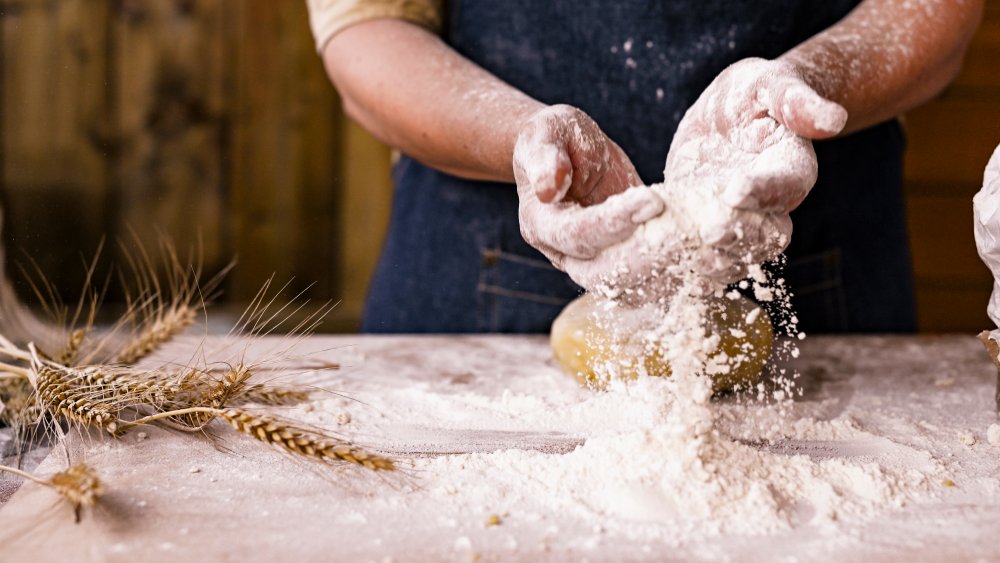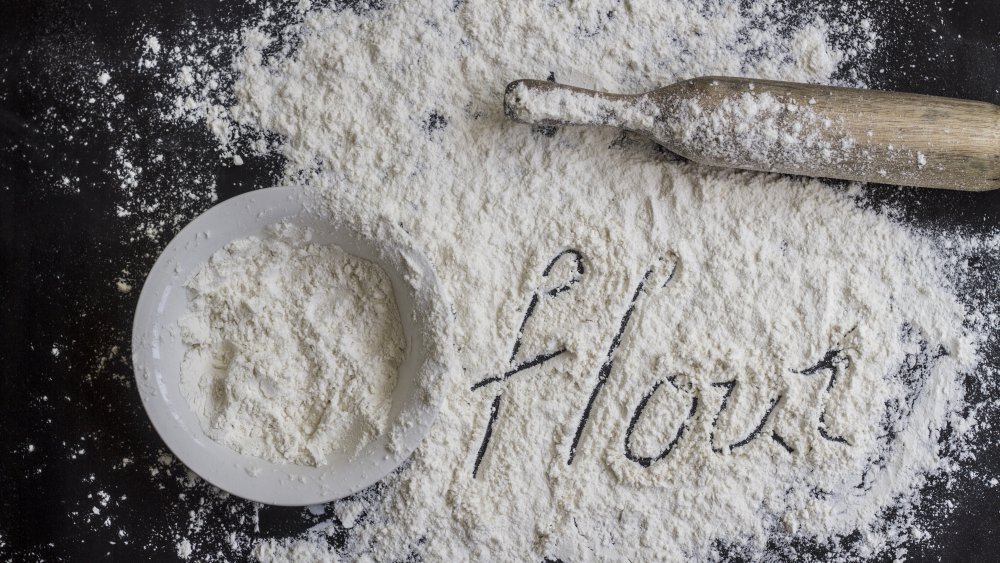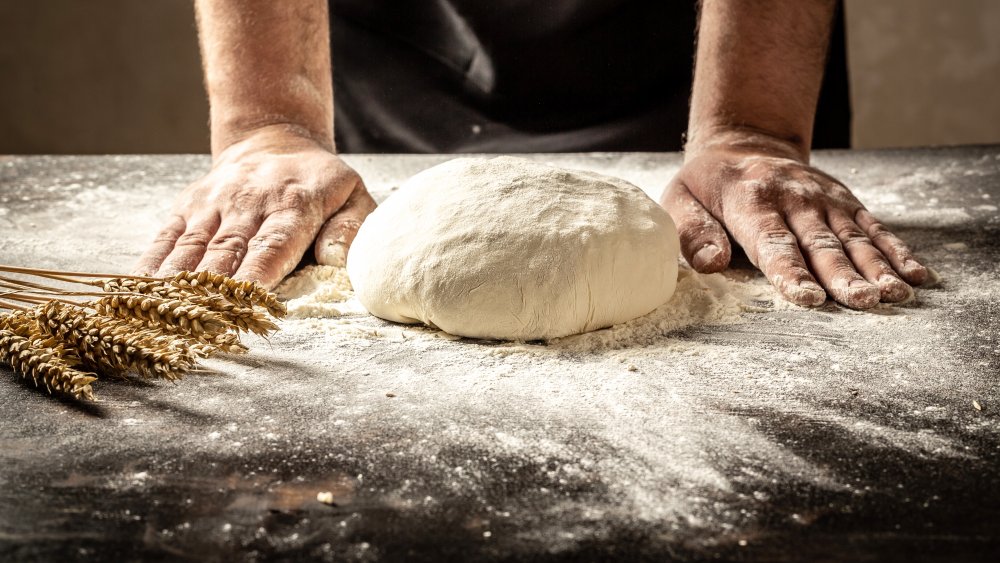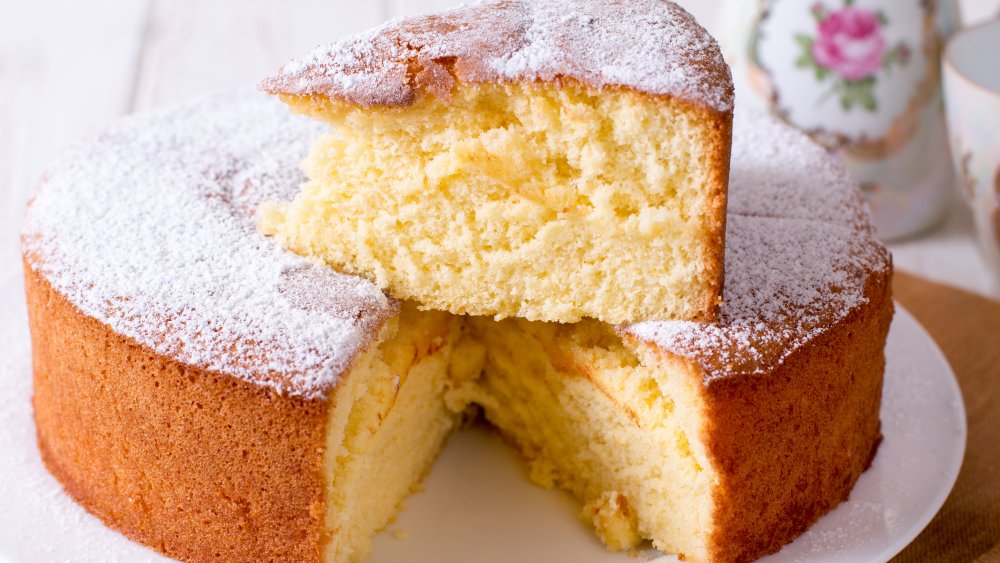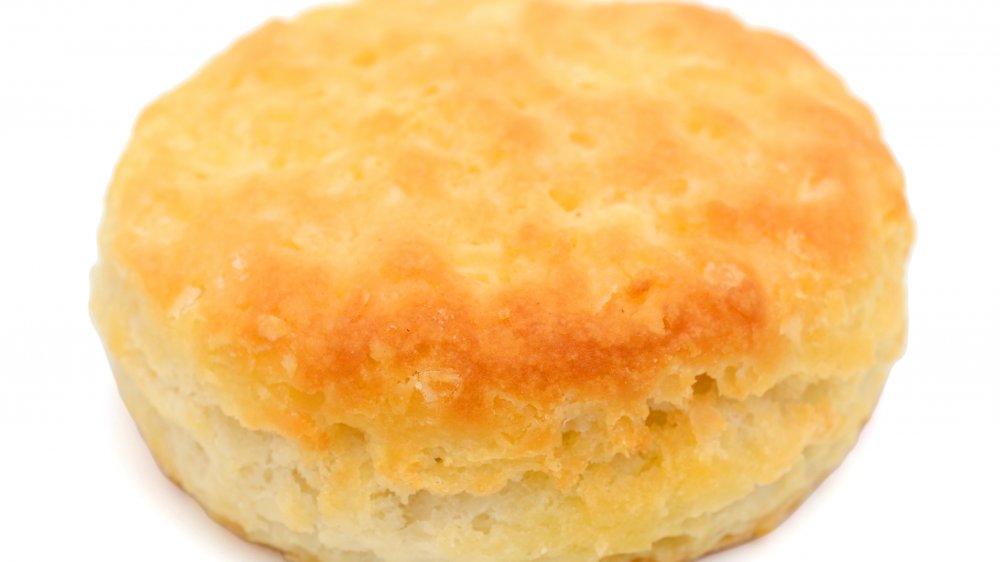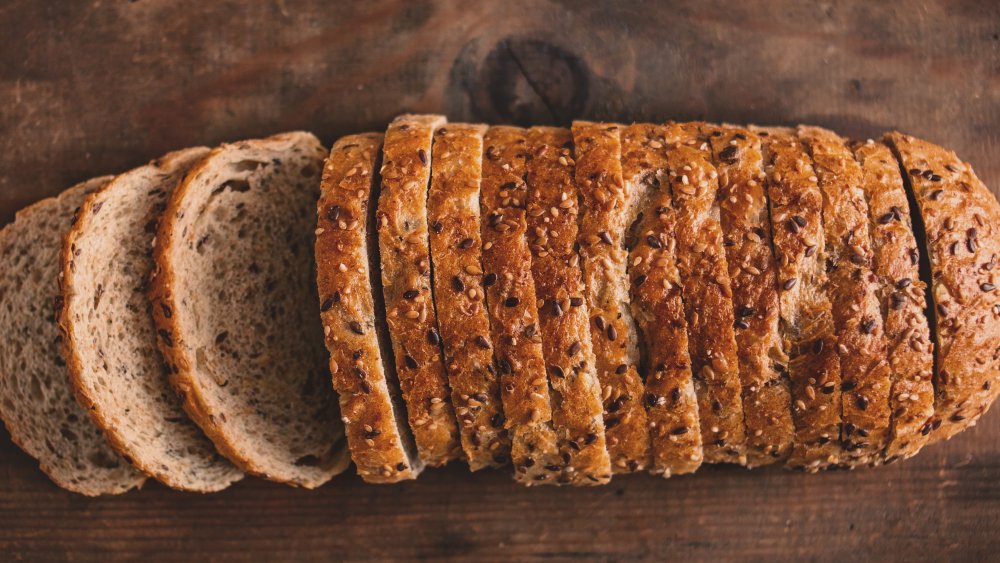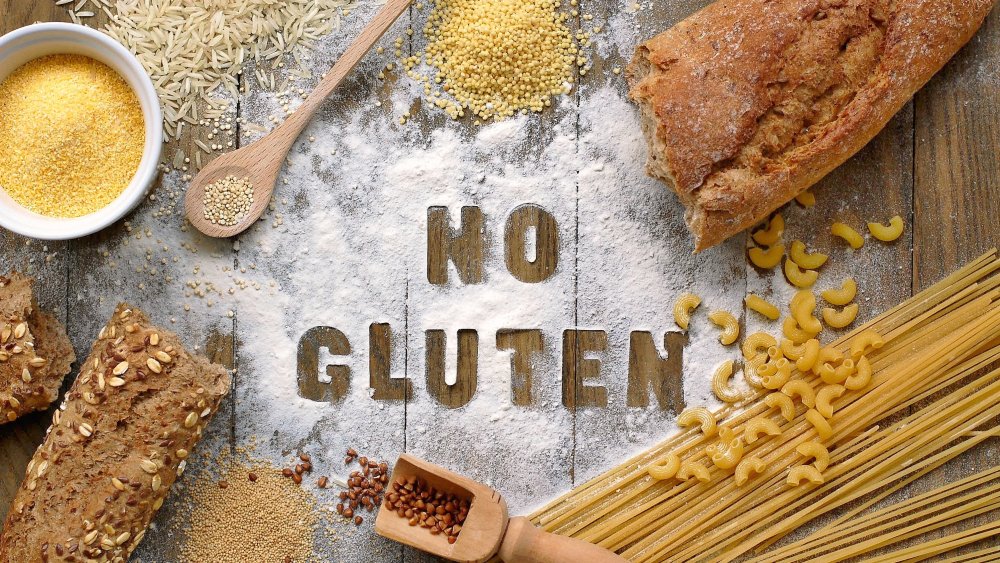Baker Explains The Real Difference Between Bread, Cake, Self-Rising And All-Purpose Flour
If you're a newbie baker, welcome to one of the most fun, fulfilling ways to pack on a few pounds. Of course, a baking addiction can also lead to making new friends when you can't stop turning out delicious breads, cakes, and cookies, so you start to give away your goodies.
One of the questions you may have as a beginning baker is, what's up with all these different types of flour, and do I really need to buy each different kind? After all, one of them is named all-purpose, so shouldn't that, like, work for everything? Well, not really.
Elizabeth Nelson, Test Kitchen Manager at Wilton (the baking pan and cake decorating suppliers), says, "While some conversions exist online... for best results, stick to what's listed in the recipe. Using whatever type of flour the recipe calls for will give the best results, and you won't get stuck with a dense, heavy cake or a loaf of bread without that nice, chewy texture."
Okay, so what are all of the different types of flour and what do they do? We put this question to her, and she supplied a quick primer on several different kinds of flour.
All-purpose flour
Nelson says that if a recipe calls for flour but does not specify a type, all-purpose flour is probably going to be the best kind to use. She says it has a medium level of protein content (about 9 to 11 percent) and goes on to explain that different flours have different protein levels and more protein means more gluten. More gluten, she says, "can be a good or a bad thing, depending on what you are making." All-purpose is best in cookies, muffins, and some types of cake. Nelson advises, "If you can only keep one type in your kitchen, this would be the one!"
Bread flour
Bread flour, Nelson notes, has about 12 to 12.7 percent protein, which is on the high side as flours go. (She says exact protein levels may vary from brand to brand, but some boutique brands may print this information on the label.) This higher protein level, she explains, "is what gives bread its structure from gluten development." This type of flour is going to be a must if you want to perfect your sourdough technique or finally nail that perfect crusty baguette.
Even if you're not a bread baker, you may still want a bag of bread flour in the pantry. According to celebrity chef Alton Brown, substituting bread flour for at least half of the all-purpose flour in your favorite chocolate chip cookie recipe will make for the chewiest cookies.
Cake flour
Cake flour, Nelson tells us, usually has about 7 to 9 percent protein, and also has a super fine consistency. She advises that cake flour will usually need to be sifted before you measure it. This low-protein flour is to be used when you're baking something (like a cake) where you want the end result to be "extra light and fluffy."
If you want a flour that's even lower in protein, there's also something called pastry flour that Nelson says is "perfect for tender pie crusts." She cautions that it can be quite difficult to find in most non-gourmet grocery stores, so if you really want a prize-winning pie crust, it may need to be something you order online.
Self-rising flour
Self-rising flour, Nelson explains, is all-purpose flour that's had baking powder and salt added to it. She does not recommend using self-rising flour in any recipes that don't call for it as doing so may interfere with the amount of leavening in the recipe. Self-rising flour is typically used for muffins, biscuits, and pancakes — basically anything soft, light, and airy.
If there's one type of flour you do not need to buy unless it's something you're going to be using all the time, that type would be self-rising. If it's just something you need every now and then, it's incredibly easy to DIY your own by simply adding 1 1/2 teaspoons baking powder and 1/2 teaspoon salt for each cup of all-purpose flour.
Whole wheat flour
If you've ever wondered what makes white flour different from wheat flour (and thus white bread different from wheat bread), Nelson has the answer to this question, as well. She says white flour is flour that has had the germ and bran removed during processing, while whole wheat flour includes the entire grain. The end result with the whole wheat version is "a flour with more fiber," which is usually seen as a good thing, at least nutrition-wise (although the end product may not be as healthy as you'd think). She says that all whole wheat flours are not created equal, however, and speaks of flours "made from heritage grains," explaining that some of these may be "better for different types of baking."
Gluten-free flour
The last type of flour that Nelson discussed with us is one that covers an extremely wide range of products: gluten-free flour. This label is applied to any type of flour that is made from non-wheat ingredients, and these can run the gamut from amaranth to bananas to rice and beyond — just no wheat, barley, or rye. Nelson emphasizes that gluten-free flours do not work the same way as wheat flours do, and advises that "using gluten-free blends in recipes that have been developed for wheat flours can take some experimentation" due to the fact that "gluten-free flours can interact differently with the other ingredients in the recipe."
